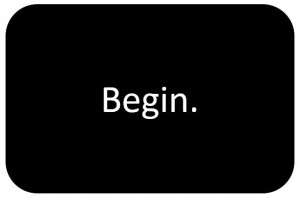The prestigious Arthur W. Page Society recently conducted a global survey of Chief Communications Officers’ (CCOs) current challenges and responsibilities. The Executive Summary and full “The CCO As Pacesetter” report highlight four main workstreams CCOs are undertaking as they help their CEOs drive transformation.
These workstreams are wholly scalable and important strategies for the health of growing businesses of every size. All companies can benefit from looking through the CCO’s lens and embracing similar outcomes in size- and maturity-relevant ways.
At the risk of oversimplifying, I’ve outlined these four workstreams in terms of questions all CEOs should be asking themselves and their teams.
- Are we engaging with all our stakeholders? CEOs naturally keep an eye on marketing to ensure customers are engaged and positively responsive. But business success requires that all your stakeholders are moving in the same direction as you. You must actively bring along employees, investors, government, neighbors and the public at large. Their experiences with your company need to be “on brand,” authentic and aligned with where you want the company to head.
- Does our culture embody our future vision? As your vision evolves, your culture needs corresponding care. How does it need to “possess new skills, exhibit different behaviors and mindsets and work in different ways?” CCOs collaborate with Human Resources and across the enterprise to provide the “reinforcement, rituals, training, tools and systems to enable the new culture.”
- Is the business inherently delivering a positive societal purpose? CCOs are increasingly helping CEOs transform their companies by “defining, reinforcing or refining corporate character.” The survey reinforces that “stakeholders increasingly expect business to create … broader societal value.” Employees and customers are choosing companies based on their ability “to create meaningful, positive change in society.” Businesses need to act on – and frame – their societal value in authentic ways, making it “an integral part of the fabric of the business.” CCOs help with the expression and reinforcement, but in fact, the embodiment of purpose starts from the C-suite. If you’re living it — through supply chain, policies and processes, company conduct — your business is 99% of the way there.
- Are we able to listen to the market well enough to see our opportunities and risks? Finally, CCOs use technology to engage with diverse stakeholders, but also to defend the company against fast-moving misinformation and generate valuable data and insights. Even if you’re not ready for expensive technology investments you can listen to your audiences, engage in dialogue with (not at) them, and monitor changes in attitudes and information.
Regardless of the scope or sophistication of companies’ communications, the single most powerful part of corporate communications is always leadership’s strategic vision and voice. Every CEO can ask these questions, evaluate their company’s course, and guide the ship where they want it sailing.
A version of this article was originally published here.
Business & Finance Articles on Business 2 Community
(25)







